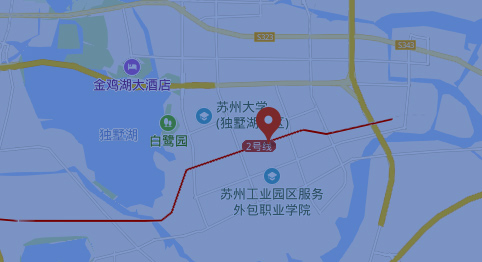Explore future photonic computing using silicon photonics
Shao Rui completed his undergraduate studies in Communication
Engineering at Soochow University. In 2020, he joined the 311 programme at NUSRI
Suzhou and subsequently pursued a master’s degree at NUS. Currently, he is a
PhD student in the NUS Department of Electrical and Computer Engineering under
the guidance of Associate Professor Gong Xiao, focusing on the design and
development of optoelectronic integrated devices and chips for artificial
intelligence (AI) and quantum computing.

During the 311 programme at NUSRI Suzhou, Shao Rui experienced a
transformative international transition through full-English teaching and Original
NUS Curriculum. "The programme provided me with a whole new perspective. "
Shao Rui recalls. "The immersive English courses not only enhanced my
professional knowledge but also broadened my international outlook. More
importantly, it significantly improved my self-management, critical thinking,
and independent problem-solving skills, enabling me to navigate complex
challenges with confidence and clarity."
Through his studies at NUSRI Suzhou, Shao Rui learned about academic
conferences that regularly showcase frontier research. Inspired, he actively
participated in various conferences in the field of electrical and computer
engineering. In 2021, Shao Rui was awarded the Best Student Paper Award at the
IEEE International Conference on IC Design and Technology (ICICDT), a
prestigious conference with over 20 years of history. This recognition
reinforced his determination to pursue a career in research, focusing on
integrating optoelectronic devices with AI and quantum technologies.
When asked how he transitioned from communication engineering to
silicon photonics research, Shao Rui explained "With the rapid development
of AI, big data, and quantum information technology, existing network solutions
are struggling to meet the global demand for high-performance computing.
Silicon photonics, as an emerging technology, integrates optical signals into
silicon-based integrated circuits. This not only addresses the speed
limitations of traditional electronic components but also significantly reduces
energy consumption, paving the way for efficient and sustainable information
processing systems. It’s an exciting and promising field worth exploring."
To date, significant progress has been made in silicon photonics, a
leading technology in wireless communications. However, Shao Rui observed that
despite its potential for high-speed data transmission and processing, silicon
photonics remains a developing technology with many unresolved challenges.
Among them, high-speed photodetectors integrated with silicon-based
optoelectronic platforms are critical for next-generation data centers and
telecom networks. These devices, which convert optical signals into electrical
ones, directly impact the performance of silicon photonic systems.
To address issues such as enhancing photodetector sensitivity and
ensuring accurate signal transmission, Shao Rui pioneered an InGaAs avalanche
photodiode (APD) based on a photon-trapping structure. This innovative design
leverages light-trapping to improve optical absorption efficiency, mitigating
traditional challenges like reduced response speed and increased dark current.
The APD holds significant applications in areas such as LiDAR, quantum
information processing, and biomedical imaging.
Through persistent experimentation, optimization, and validation,
Shao Rui has steadily advanced in his research journey. Now in the second year
of his PhD, he has published three papers and contributed to three projects
spanning photodetectors, novel optical memories, and heterogeneous
optoelectronic integration. His dedication to research suggests a bright future
ahead.




